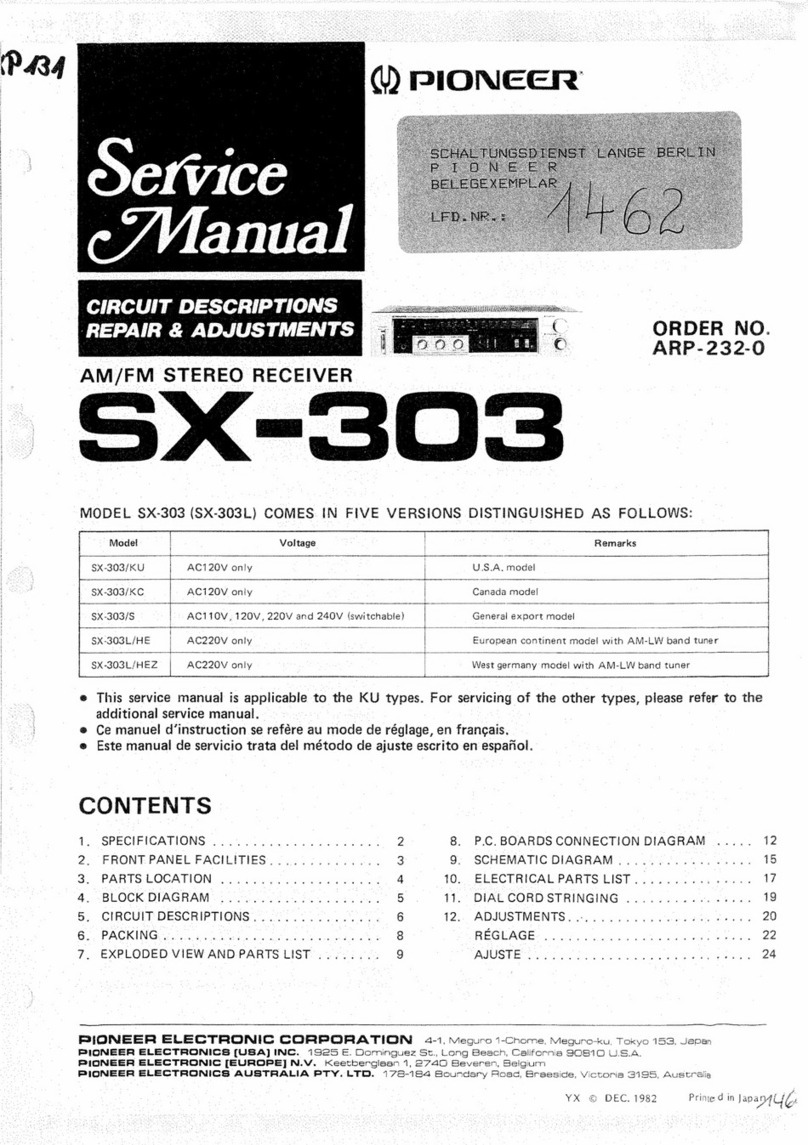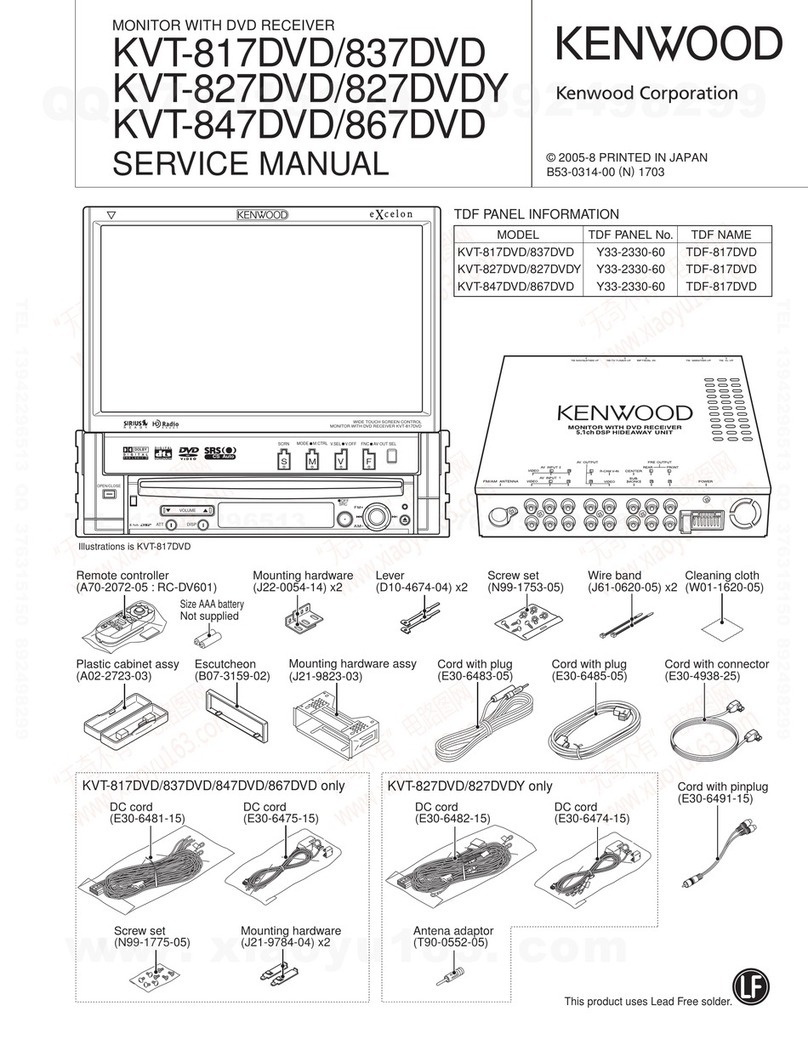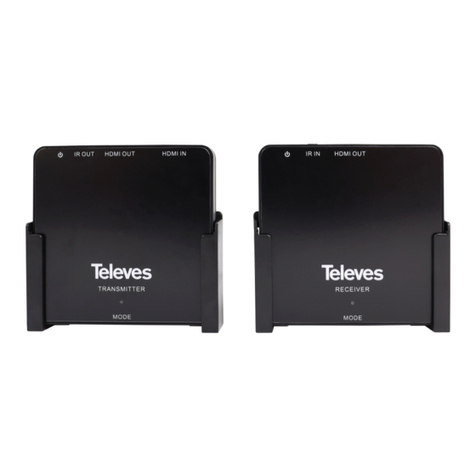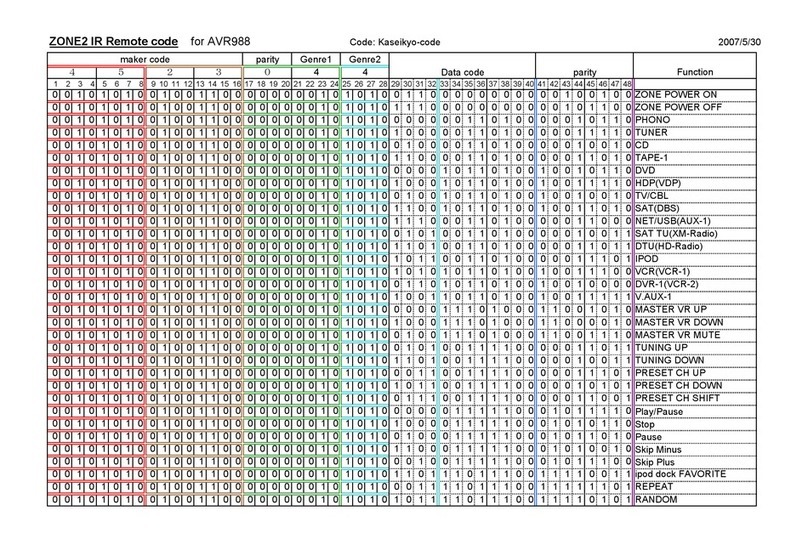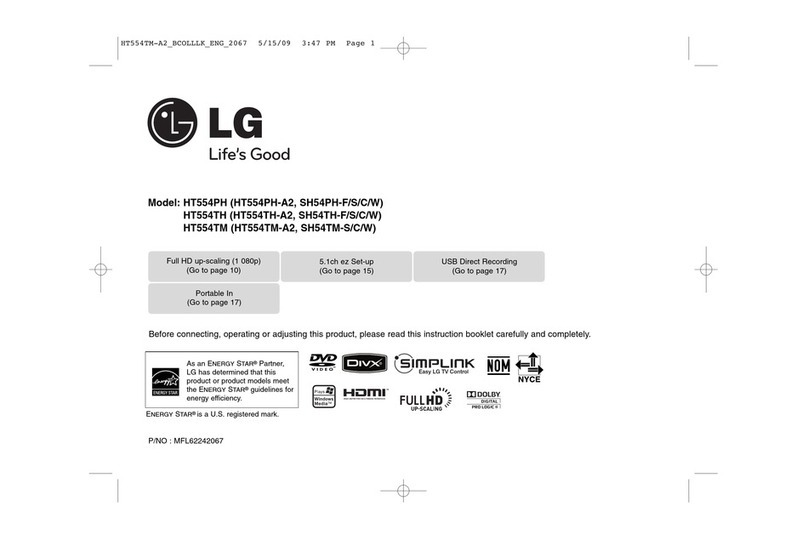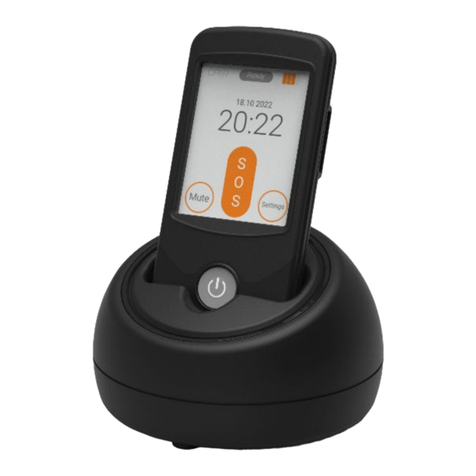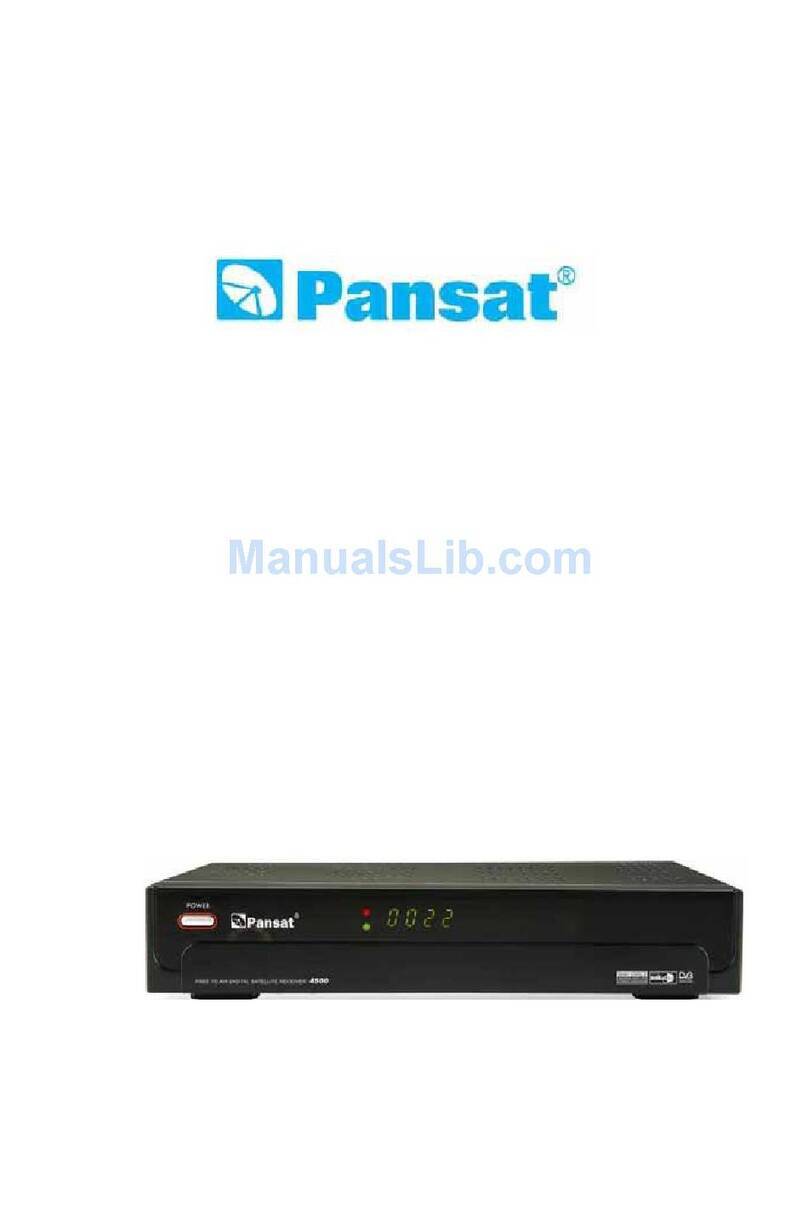GE Grid Solutions MDS Master Station User manual

MDS™ Master Station
Modular Communications Platform
MDS 05-6399A01, Rev. F
DECEMBER 2016
Firmware Version 4.1.6 and higher.
Technical Manual
Technical Manual
Technical Manual
Technical Manual
Technical Manual
Technical Manual
Technical Manual
Technical Manual
Technical Manual
Technical Manual
Technical Manual
Technical Manual
Technical Manual
Technical Manual
Technical Manual
Technical Manual


Quick-Start instructions for this product are contained in publication 05-6398A01.
Visit our website for downloadable copies of all documentation at www.gemds.com.
IMPORTANT
This manual describes the details, installation, configuration and operation of the
MDS™Master Station. It does not cover the description or configuration of features and
settings common to the MDS Orbit family of products. For full information on
configuring the parts of the system that are not directly related to SD/LN networking or
the MDS™Master Station, please reference the MDS Orbit MCR Technical Manual
(p/n: 05-6632A01). The MDS™Master Station manual is designed to be used in
parallel with the MCR Technical Manual, and as such does NOT cover information
already described in that manual.


MDS 05-6399A01, Rev. F MDS™ Master Station 1
TABLE OF CONTENTS
1.0 INTRODUCTION..................................................................................................... 9
1.1 Organization of Manual............................................................................................... 9
Related Publications.............................................................................................. 10
2.0 KEY PRODUCT FEATURES................................................................................ 11
2.1 Accessories and Spare Items................................................................................... 13
2.2 FCC Emission Designators: How to Find Them...................................................... 15
2.3 Front Panel................................................................................................................ 15
2.4 Rear Antenna Connections ...................................................................................... 16
3.0 INSTALLATION PLANNING................................................................................ 17
3.1 Applications............................................................................................................... 17
Repeater and Polling Remote Operation (MPRS Only)....................................... 18
Simplex and Switched Carrier Operation ............................................................. 18
3.2 Network Management............................................................................................... 18
MPRS Network-Wide Diagnostics ........................................................................ 18
MPRS Network Management Using PulseNET ................................................... 18
3.3 Redundant versus Non-redundant Operation.......................................................... 19
3.4 Antennas and Feedlines........................................................................................... 19
Antennas................................................................................................................ 19
Feedlines ............................................................................................................... 19
3.5 Grounding Considerations........................................................................................ 20
3.6 Data Interface Connections...................................................................................... 21
Ethernet Data Interface (RJ-45)............................................................................ 21
Serial Data Interfaces............................................................................................ 21
MPRS Serial Data Connection.............................................................................. 21
Mini USB................................................................................................................ 22
Alarm Output and 4-Wire Audio............................................................................ 22
4.0 INSTALLATION PROCEDURES......................................................................... 23
4.1 Unpacking and Inspection........................................................................................ 23
4.2 Installation Steps....................................................................................................... 23
Initial Startup & Operation..................................................................................... 26
Module LED Indicators.......................................................................................... 26
Normal Indications................................................................................................. 27
Maximizing RSSI................................................................................................... 27
5.0 DEVICE MANAGEMENT...................................................................................... 28
5.1 Pre-Configured Settings ........................................................................................... 28
5.2 One-Time “Recovery” Passwords ............................................................................ 28
One-Time Passwords: How They Work ............................................................... 28
Creating a One-Time Password............................................................................ 29
Logging in With a One-Time Password................................................................ 29
Deleting a One-Time Password............................................................................ 29
5.3 Configuration via Command Line (CLI).................................................................... 30
Tab Completion Feature ....................................................................................... 30

2 MDS™ Master Station MDS 05-6399A01, Rev. F
CLI Quick Reference Table................................................................................... 30
5.4 Interface Naming....................................................................................................... 32
5.5 Configuration via the Device Manager..................................................................... 32
General Configuration........................................................................................... 33
5.6 Interface Configuration ............................................................................................. 34
Understanding....................................................................................................... 34
Configuring ............................................................................................................ 34
5.7 LAN............................................................................................................................ 38
Understanding....................................................................................................... 38
Configuring ............................................................................................................ 38
5.8 Bridging..................................................................................................................... 40
Understanding....................................................................................................... 40
Configuring ............................................................................................................ 41
5.9 SDMS Interface......................................................................................................... 41
Understanding....................................................................................................... 41
Configuration ......................................................................................................... 43
General Settings.................................................................................................... 44
Dlink....................................................................................................................... 48
MAC Settings......................................................................................................... 49
IP Payload ............................................................................................................. 51
Advanced Configuration........................................................................................ 57
Audio...................................................................................................................... 60
Actions................................................................................................................... 61
Remote SD Reprogramming................................................................................. 65
Monitoring.............................................................................................................. 69
Performance.......................................................................................................... 70
5.10SD-x/0/0 Interfaces................................................................................................... 71
General.................................................................................................................. 71
Statistics................................................................................................................. 71
5.11LNMS interface ......................................................................................................... 74
Understanding....................................................................................................... 74
Advanced Configuration........................................................................................ 80
Monitoring.............................................................................................................. 81
CLI Configuration Examples ................................................................................. 86
5.12LN-x/0/0 interfaces.................................................................................................... 93
6.0 MASTER STATION MODULES........................................................................... 94
6.1 AC Power Supply Module......................................................................................... 95
6.2DC Power Supply Module ........................................................................................ 96
6.3 Platform Manager Module........................................................................................ 97
Platform Manager LED Indicators......................................................................... 97
Ethernet Interfaces................................................................................................ 97
COM1 Interface ..................................................................................................... 98
COM2 Interface ..................................................................................................... 99
Mini USB Interface............................................................................................... 101
6.4 SD Radio Modules.................................................................................................. 102
SD Master Radio Module LED Indicators........................................................... 102
SD Master Radio Module RF Interface............................................................... 102

MDS 05-6399A01, Rev. F MDS™ Master Station 3
Technical Specifications...................................................................................... 103
6.5 LN Radio Modules .................................................................................................. 105
LN Master Radio Module LED Indicators ........................................................... 105
Technical Specifications...................................................................................... 106
6.6 Alarm and Alarm/Relay Modules............................................................................ 109
Alarm Module LEDs ............................................................................................ 110
Alarm/Audio Interface.......................................................................................... 110
Alarm/Relay Toggle Switch (6847 Only)............................................................. 111
Alarm/Relay RF Connections (6847 Only) ......................................................... 111
6.7 Duplexer Tray.......................................................................................................... 112
7.0 SPECIAL CONFIGURATIONS........................................................................... 113
7.1 Migrating “A” Modem Networks.............................................................................. 113
Mitigation strategy for mixed SDx/x710 repeater networks using the “A” modem ..... 113
User Configuration 1: Non-CKEY Repeater Network Case............................... 113
User Configuration 2: CKEY Repeater Network Case....................................... 114
8.0 TROUBLESHOOTING........................................................................................ 115
8.1 Interpreting Module LEDs....................................................................................... 115
Normal Operation................................................................................................ 115
Exception and Alarm States................................................................................ 116
8.2 Redundant Units..................................................................................................... 116
8.3 Technical Assistance.............................................................................................. 116
8.4 Replacing Modules ................................................................................................. 116
Power Supply Modules........................................................................................ 117
Peripheral Modules –including Platform Manager, Radio, Alarm, and Alarm
Relay Modules..................................................................................................... 117
Hot Swap Redundant Modules........................................................................... 118
Internal Duplexer Tray......................................................................................... 119
400 MHz Notch-Type Duplexers......................................................................... 119
Bandpass-Type Duplexers.................................................................................. 119
8.5 Testing and Removing an Internal Duplexer ......................................................... 120
Testing................................................................................................................. 120
Removing the Internal Duplexer ......................................................................... 120
9.0 TECHNICAL REFERENCE DATA..................................................................... 124
9.1 RF Propagation Planning ....................................................................................... 124
Fresnel Zone Clearance...................................................................................... 124
Formulas for System Planning............................................................................ 125
9.2 dBm-Volts-Watts Conversion Chart....................................................................... 127
10.0 GLOSSARY OF TERMS & ABBREVIATIONS ................................................. 128

4 MDS™ Master Station MDS 05-6399A01, Rev. F
Copyright Notice
This Technical Manual and all software described herein are protected by copyright: 2015 GE
MDS. All rights reserved.
GE MDS reserves its right to correct any errors and omissions in this publication.
Safety words and definitions
The following symbols used in this document indicate the following conditions:
Indicates a hazardous situation which, if not avoided, will result in death or
serious injury.
Indicates a hazardous situation which, if not avoided, could result in death
or serious injury.
Indicates a hazardous situation which, if not avoided, could result in minor
or moderate injury.
Indicates practices not related to personal injury.
Indicates general information and practices, including operational
information and practices that are not related to personal injury.
Installation & Servicing Precautions
The unit is provided for professional installation only, and utilizes a
specialized antenna connector to restrict the types of antenna connections
that may be made. The integrator of this device is responsible for compliance with all applicable
limits on radiated RF power, and the RF power output may need to be adjusted to maintain
compliance, depending on the gain of the antenna system.
All power supply main connections and disconnections must be made by a qualified electrical
installer.
When servicing energized equipment, be sure to wear appropriate Personal Protective Equipment
(PPE). During internal service, situations could arise where objects accidentally contact or short
circuit components and the appropriate PPE would alleviate or decrease the severity of potential
injury. When servicing radios, all workplace regulations and other applicable standards for live
electrical work should be followed to ensure personal safety.
Operational Safety Notices
The radio equipment described in this guide uses radio frequency transmitters.
Although the power level is low, the concentrated energy from a directional
antenna may pose a health hazard. Do not allow people to come in close
proximity to the front of the antenna when the transmitter is operating. More
information on RF exposure can be found online at the following website:
www.fcc.gov/oet/info/documents/bulletins
This manual is intended to guide a professional installer to install, operate, and perform basic
system maintenance on the described radio.

MDS 05-6399A01, Rev. F MDS™ Master Station 5
The RF safety distance is calculated based on each product type’s highest output power
configuration with no duplexer, redundant switching, or cable losses.
Table 1-1 Antenna Gain vs. Minimum RF Safety Distance
Radio Module Equipped
Antenna Gain
0–5 dBi
5–10 dBi
10–16.5 dBi
SDM4 –FCC
1.09 meters
1.95 meters
4.11 meters
SDM4 –IC
1.43 meters
2.54 meters
5.37 meters
SDM9 –FCC
0.99 meters
1.76 meters
3.73 meters
SDM9 –IC
1.29 meters
2.30 meters
4.87 meters
LN4
1.43 meters
2.54 meters
5.07 meters
LN9
1.08 meters
1.92 meters
3.82 meters
(other models):
Consult factory prior to operation.
Not all frequency models available. Consult factory for available models.
Antennas with gain greater than 16dBi have not been authorized for use with the EUT; and (b)
installation of the EUT into portable applications with respect to RF compliance will require
SAR testing and Regulatory approval.
CSA Notice Units (Both AC and DC supply versions) are permanently connected to
Protective Earth, via ground stud on the unit enclosure back, where the final
installation is subject to acceptance of CSA International or the local inspection authority having
jurisdiction. Conditions of Acceptability:
1. The equipment shall be installed indoors in a restricted access
location.
2. Installation of the equipment and its modules shall be conducted by
trained personnel in accordance with the electrical code.
3. This equipment is movable, Class I (earthed), pluggable Type A,
using detachable power cords, intended for use on TN or TT power
system for the AC power option.
4. The DC power option shall be connected to an approved power
source with adequate protection, isolated from the mains by
reinforced insulation.
5. This product was certified for use on a 20A branch circuit for the AC
power option.

6 MDS™ Master Station MDS 05-6399A01, Rev. F
6. The AC socket outlet shall be installed near the equipment and shall
be easily accessible.
7. The power supply cord must be disconnected from the appliance inlet
before removing any power supply from the chassis.
8. CAUTION: THIS UNIT HAS MORE THAN ONE POWER SUPPLY
CORD. DISCONNECT THE TWO POWER SUPPLY CORDS
BEFORE SERVICING TO AVOID ELECTRIC SHOCK
9. The equipment chassis shall be permanently grounded though a size
six screw and a star toothed washer.
10. The interior of the equipment is not for operator access.
FCC Part 15 Notice
This Equipment has been tested and found to comply with the limits for a Class A digital device,
pursuant to Part 15 of the FCC Rules. These limits are designed to provide reasonable protection
against harmful interference when the equipment is operated in a commercial environment. This
equipment generates, uses, and can radiate radio frequency energy and, if not installed and used
in accordance with the instruction manual, may cause harmful interference to radio
communications. Operation of this equipment in a residential area is likely to cause harmful
interference in which case users will be required to correct the interference at their own expense.
This device complies with Part 15 of the FCC Rules. Operation is subject to the following two
conditions: (1) this device may not cause harmful interference, and (2) this device must accept
any interference received; including interference that may cause undesired operation.
Warning: Changes or modifications not expressly approved by the manufacturer could void the
user’s authority to operate the equipment
FCC IDs of Available Transmitters
As of the printing date, the following identifiers are assigned to the modules listed below. For the
latest, official listings of all agency approvals, please contact your factory representative.
Radio Desc.
FCC ID
IC ID
WIFI Module
M4Y-ZCN722MV1
3195A-ZCN722MV1
LN 400Mhz Module
E5MDS-LN400
101D-LN400
LN 700Mhz Module
E5MDS-LN700
n/a
LN 900Mhz Module
E5MDS-LN900
101D-LN900
SD 400Mhz Module
E5MDS-SDM4
101D-SDM4
SD 900Mhz Module
E5MDS-SDM9
101D-SDM9
Canada, IC ERP Limits
IC SRSP-501, 6.3.2. Limits the ERP to 125W for fixed point-to-point operation. For IC use, the
antenna gain and Transmit power must be set to meet the ERP limit of 125W. This can be
accomplished by using the appropriate at antenna gain in combination with the RF power
settings

MDS 05-6399A01, Rev. F MDS™ Master Station 7
Environmental Information
The equipment that you purchased has required the extraction and use of natural resources for its
production. Improper disposal may contaminate the environment and present a health risk due to
hazardous substances contained within. To avoid dissemination of these substances into our
environment, and to diminish the demand on natural resources, we encourage you to use the
appropriate recycling systems for disposal. These systems will reuse or recycle most of the
materials found in this equipment in a sound way. Please contact GE MDS or your supplier for
more information on the proper disposal of this equipment.
ISO 9001 Registration
GE MDS adheres to this internationally-accepted quality system standard.
Quality Policy Statement
We, the employees of GE MDS, are committed to achieving total customer satisfaction in
everything we do.
Total Customer Satisfaction in:
• Conception, design, manufacture, and marketing of our products.
• Services and support we provide to our internal and external customers.
Total Customer Satisfaction Achieved Through:
• Processes that are well documented and minimize variations.
• Partnering with suppliers who are committed to providing quality and service.
• Measuring our performance against customer expectations and industry leaders.
• Commitment to continuous improvement and employee involvement.
Revision Notice
While every reasonable effort has been made to ensure the accuracy of this manual, product
improvements may result in minor differences between the manual and the product shipped to
you. If you have additional questions or need an exact specification for a product, please contact
our Customer Service Team using the information at the back of this guide. In addition, manual
updates can often be found on our Web site at www.gemds.com.
ESD Notice
To prevent malfunction or damage to this radio, which may be caused by Electrostatic Discharge
(ESD), the radio should be properly grounded by connection to the ground stud on the rear
panel. In addition, the installer or operator should follow proper ESD precautions, such as
touching a grounded bare metal object to dissipate body charge, prior to connecting and
disconnecting cables on the front or rear panels.
Open Source License Declaration
Orbit MCR products include Open Source Software. Usage is governed by the corresponding
licenses which are listed on the GE MDS Industrial Wireless website, under Orbit MCR
Software/Firmware Downloads, Support Items and download license-declaration.txt.
Upon request, in accordance with certain software license terms, GE will make available a copy
of Open Source code contained in this product. This code is provided to you on an “as is” basis,

8 MDS™ Master Station MDS 05-6399A01, Rev. F
and GE makes no representations or warranties for the use of this code by you independent of
any GE provided software or services. For more information, contact
gemds.techsupport@ge.com.

MDS 05-6399A01, Rev. F MDS™ Master Station 9
1.0 INTRODUCTION
The MDS™Master Station is an advanced, flexible platform designed for the demanding
requirements of today’s industrial wireless networks. It represents the latest development in a
line of MDS products that set the standards for wireless performance today. The Master Station
builds on this legacy with several innovative features, including a single compact chassis (2 RU),
100% duty cycle operation (no cooling fans required), front panel access to all modules, and
drop-in compatibility with earlier MDS x790/x710 radio systems.
As the central station in a wireless network, the Master Station provides uncompromised
performance and reliability in mission-critical applications. It offers redundant protection of key
modules, automatic switchover in the event of a fault, and an external battery backup option for
continued operation through temporary power losses. The Master Station mounts conveniently in
a 19-inch rack cabinet, or may be used in shelf/tabletop configurations.
Figure 1-1. MDS™Master Station
The Master Station can be configured for a variety of service applications, including Point-to-
Multipoint SCADA, Point-to-Point links, broadband, and Cellular connectivity, depending on the
modules installed and active in the chassis.
In FCC part 90 SCADA service, the radio can function as a Master, Repeater, or Remote and is
capable of full duplex operation. Internal duplexer options are available, configured for use with
or without an external notch filter. Provisions for connection to an external duplexer are also
provided. The Master Station is fully compatible with MDS PulseNET management software,
which provides local or remote diagnosis and health reporting.
1.1 Organization of Manual
This manual is intended for use by systems engineers, network administrators, and others
responsible for the planning, installation, commissioning, use, and troubleshooting of the
wireless system. The manual begins with an overall description of product features, and is
followed by the steps required to install the unit and place it into normal operation.
Following the installation procedures, sections are devoted to particular modules that may be
installed in the chassis, including configuration settings for each of these units. Additionally,
troubleshooting tips for resolving system difficulties are offered, as well as a technical reference
section with data on wiring, specifications, and spare parts that may be ordered for the unit.
When installation and setup of the radio is complete, it is recommended that this guide be kept
available for future reference at the installation site. Updated manuals, firmware, and other
support documents may be obtained at any time from our website: www.gemds.com.

10 MDS™ Master Station MDS 05-6399A01, Rev. F
Related Publications
In addition to this manual, a companion Setup Guide is available for the MDS™Master Station,
Part No. 05-6398A01. The Setup Guide is focused on the essential steps for installation and
startup of the unit, and is designed to be used with this Technical Manual.
The MDS™ Master Station Setup Guide, Part No. 05-6398A01 contains basic installation and
startup instructions for the product.
All GE MDS user manuals and updates are available online at www.gemds.com.
The MDS™Master Station is built on the Orbit platform. For
reference information on advanced networking features available on
the local LAN Interface, refer to the MDS Orbit MCR Technical
Manual (05-6632A01). Note that not all features are supported by
the Master Station or the SD Radio Module. Wireless networking
capabilities are limited by the narrowband channel and the
capabilities of the remote radio.

MDS 05-6399A01, Rev. F MDS™ Master Station 11
2.0 KEY PRODUCT FEATURES
As a licensed, long range IP/Ethernet and serial communications device, the Master Station
exceeds industry standards for reliability and performance in wireless networks. Listed below are
several key features and benefits of the product, and these are available with the appropriate
modules installed and configured in the chassis.
• Drop-in replacement for earlier MDS x790 Master Stations, including support for all
modem types
• Backward compatibility with all legacy MDS x710 Series remote transceivers (A and B
modems)
• Compatible with next generation MDS narrowband wireless LN radios, with enhanced
throughput and security. (When equipped with LN radio cards)
• May be operated as a Master Station, repeater, or remote radio
• Supports use of MDS™PulseNET Network Management Software
• Software-configurable via a built-in web-based device manager—no manual adjustments
required
• Firmware-upgradeable for future improvements and functionality enhancements
• Available encryption of payload data (AES 128-bit), for networks using all-SD radios
• Dual serial functionality (RS-232 and RS-485)
• Licensed 10-watt radio design ensures minimum 5-watts at the duplexer output, and
maximizes communications range with low interference risk from other users
• RF power adjustable; 1-10 watts at output of radio card (before relay & duplexer)
• Unit is configurable via software, locally or remote
• Media Access Control (MAC) to prevent data collisions when two or more radios attempt
to use the radio channel at the same time
• Supports a wide variety of modem speeds and bandwidths for regulatory compliance in
virtually all regions of the world (future availability)
Some features may not be available on all units, depending on the options purchased and
regulatory constraints for the region in which the radio will operate.
Figure 2-1 MPRL Compatible Remotes

12 MDS™ Master Station MDS 05-6399A01, Rev. F
When equipped with LN radio cards, the Master Station works with Orbit MCR LN (left) and
Orbit ECR LN (right.
Figure 2-2 MPRS Compatible Remotes
When equipped with SD radio cards, the Master Station works with legacy MDS x710 (left), and
newer MDS SD Transceivers.

MDS 05-6399A01, Rev. F MDS™ Master Station 13
2.1 Accessories and Spare Items
The following table lists common accessories and spare items for use with the Master Station.
GE MDS also offers an Accessories Selection Guide listing an array of additional items available
for use with the product. Contact your factory representative or visit www.gemds.com to obtain a
copy of the guide.
Table 2-1. Accessories and Spares
Item
Description
Part Number
Three-conductor DC
power plug
Mates with power connector on the front of the unit’s DC power supply
module. Screw terminals are provided for wires, and threaded locking
screws to prevent accidental disconnect.
73-1194A22
Setup Guide
(for installation & basic
startup)
Brief document describing the installation and setup of the unit. One copy
normally supplied with each unit. Additional PDF copies available (no
charge) from www.gemds.com.
05-6398A01
COM Port Adapter
Converts the unit’s RJ-45 serial jack to a DB-9F type.
73-2434A25
Mini USB 2.0 Cable, 3
ft./0.91 meter length
USB Type A (M) to mini-USB Type B (M) cable to provide console access
through the radio’s mini USB connector.
97-6694A05
Lightning Protectors
Polyphaser Surge Protector, IS-50NX-C2, DC blocked, 125 MHz to 1000
MHz, N-female connectors, surface (flange) mount
Polyphaser Surge Protector, IS-B50LN-C2, DC blocked, 125 MHz to
1000 MHz, N-female connectors, bulkhead mount
97-1680A01
97-1680A05
Cavity Filter Kit
Removes or attenuates interfering 900 MHz signals from the receiver
input. Might be necessary in areas with high powered stations nearby,
such as paging transmitters. Requires tuning to a particular frequency.
Available for use with an internal or external duplexer.
03-3621Axx
Alarm & Audio Cable
Cable connects to 6847/6848 Alarm/Relay Modules to provide access to
four wire audio, push to talk, analog RSSI, and Major/Minor alarm dry
contacts
03-6940A01
External Battery Kit
2U rack mounted UPS battery backup. Connects to 03-6755A02 AC
power module.
UPS, 120V, 1.5kVA, 900W, 2U –UL/CSA for North America
UPS, 230V, 1.5kVA, 900W, 2U –CE Marked for Europe
97-4444A01
97-4444A02
100-220 AC Power
Supply Module
100-220 VAC, 50/60 Hz. 120W Max AC Power Supply Module. Spare
power supply can be used in either of two power supply slots of the
MDS™Master Station.
03-6755A03
+/- 12-36 VDC Power
Supply Module
+/- 12-36 VDC. 10 A Max. DC Power Supply Module. Spare power supply
can be used in either of two power supply slots of the MDS™ Master
Station.
03-6843A01
+/- 36-75 VDC Power
Supply Module
+/- 36-75 VDC. 3.5 A Max DC Power Supply Module. Spare power supply
can be used in either of two power supply slots of the MDS™ Master
Station.
03-6844A01
+/- 75-140 VDC Power
Supply Module
+/- 75-140 VDC. 2 A Max DC Power Supply Module. Spare power supply
can be used in either of two power supply slots of the MDS™ Master
Station.
03-6845A01
Platform Manager
Module
Provides management and data interface functions.
03-6834A01A
SDM9 Module
SDM9 C-band full duplex radio: 928-960MHz FCC Part 24, 101, 90, IC
SDM9 K-band full duplex radio: TX 928-960MHz / RX 880-915MHz FCC
Part 24, 101, 90
03-6846A01-9C
03-6846A01-9K

14 MDS™ Master Station MDS 05-6399A01, Rev. F
Table 2-1. Accessories and Spares
Item
Description
Part Number
SDM4 Module
SDM4 B-band full duplex radio: 400-450MHz FCC Part 22, 90, IC, CE
SDM4 C-band full duplex radio: 450-512MHz FCC Part 90, IC, CE
03-6846A01-4B
03-6846A01-4C
LN4 Module
LN400 E-band QAM radio: 406.1-470MHz FCC Part 90, CE
LN400 A-band QAM radio: 330-406MHz CE
03-6846-L4E
03-6846-L4A
LN7 Module
LN700 A-band QAM radio: 757-758MHz, 787-788MHz FCC Part 27
03-6846-L7A
LN9 Module
LN900 C-band QAM radio: 896-960MHz FCC Part 101, 90, IC
03-6846-L9C
Redundant
Alarm/Relay Module
Active radio relay and alarm/audio interface.
03-6847A01
Non-Redundant Alarm
Module
Non-redundant—alarm and audio interface.
03-6848A01
900MHz Duplexers
(TX HIGH)
Spare duplexer in tray wired for MDS Master Station.
9 MHz RX 932.0-932.5, TX 941.0-941.5), COMBINED OUT
24 MHz RX 928.0-929.0, TX 952.0-953.0), COMBINED OUT
31 MHz RX 928.0-929.0, TX 959.0-960.0), COMBINED OUT
9 MHz RX 932.0-932.5, TX 941.0-941.5),3 port out for filter
24 MHz RX 928.0-929.0, TX 952.0-953.0),3 port out for filter
31 MHz RX 928.0-929.0, TX 959.0-960.0),3 port out for filter
39 MHz RX 896.0-898.0, TX 935.0-937.0, COMBINED OUT
39 MHz RX 896.0-898.0, TX 935.0-937.0, 3 port out for filter
03-6837D9B1
03-6837D9C1
03-6837D9D1
03-6837D9B3
03-6837D9C3
03-6837D9D3
03-6837D9E1
03-6837D9E3
900MHz Duplexers
(TX LOW)
Spare duplexer in tray wired for MDS Master Station.
9 MHz TX 932.0-932.5, RX 941.0-941.5), COMBINED OUT
24 MHz TX 928.0-929.0, RX 952.0-953.0), COMBINED OUT
31 MHz TX 928.0-929.0, RX 959.0-960.0), COMBINED OUT
9 MHz TX 932.0-932.5, RX 941.0-941.5),3 port out for filter
24 MHz TX 928.0-929.0, RX 952.0-953.0),3 port out for filter
31 MHz TX 928.0-929.0, RX 959.0-960.0),3 port out for filter
39 MHz TX 896.0-898.0, RX 935.0-937.0, COMBINED OUT
39 MHz TX 896.0-898.0, RX 935.0-937.0, 3 port out for filter
03-6837D9Q1
03-6837D9R1
03-6837D9S1
03-6837D9Q3
03-6837D9R3
03-6837D9S3
03-6837D9T1
03-6837D9T3
350-512MHz
Duplexers
Spare duplexer in tray wired for MDS Master Station.
5-10 MHz Split (350 - 512MHz), TX HIGH,COMBINED OUT
5-10 MHz Split (350 - 512MHz), TX HIGH, 3 port out for filter
5-10 MHz Split (350 - 512MHz), TX LOW,COMBINED OUT
5-10 MHz Split (350 - 512MHz), TX LOW, 3 port out for filter
03-6837D411
03-6837D413
03-6837D421
03-6837D423
700MHz Duplexers
Spare duplexer in tray wired for MDS Master Station.
RX 757-758MHz, TX 787-788MHz,COMBINED OUT
RX 757-758MHz, TX 787-788MHz, 3 port out for filter
TX 757-758MHz, TX 787-788MHz,COMBINED OUT
TX 757-758MHz, RX 787-788MHz, 3 port out for filter
03-6837D711
03-6837D713
03-6837D721
03-6837D723
Front Cable
Replacements
Non-Redundant Radio to Duplexer: SMA MALE TO SMB FEMALE
Redundant Relay to Duplexer: SMA MALE TO SMB FEMALE
Redundant Radio to Relay: SMB FEMALE TO SMB FEMALE
03-4528A07
03-4528A07
03-4528A08

MDS 05-6399A01, Rev. F MDS™ Master Station 15
2.2 FCC Emission Designators: How to Find Them
An FCC emission designator is a seven-character string that represents the bandwidth,
modulation, and other characteristics of a transmitted radio signal. This information is required
when applying for an FCC license. The designator assigned to your equipment depends on the
particular sub-model of the product line you are licensing. In some cases, multiple designators
are used to cover product variants such as base stations, remotes, indoor/outdoor units, frequency
band, etc. An updated and official list of emission designators is maintained on the FCC’s
website at the following link: https://apps.fcc.gov/oetcf/eas/reports/GenericSearch.cfm
Once the site has been reached, proceed as follows to determine your designator:
1. At the top of form in the box labeled Grantee Code: enter E5M. This is the code for GE MDS
products.
2. At the bottom of the form in the box labeled Show x Records at a Time, enter a sufficiently large
number (i.e., 300) to display all GE MDS records on file. Press Enter.
3. Once the list appears, it can be searched to locate the particular model you are seeking
information on. To the left of each entry, there is a document icon. Click the icon to display
the equipment authorization report.
4. Scroll down to the section labeled Equipment Specifications to locate the appropriate emission
designator. If additional assistance is required, contact GE MDS using the information given
at the end of this manual.
2.3 Front Panel
All access to Master Station modules is made from the front of the unit after removing the
protective cover. To remove the cover, simply grasp the sides and pull out with a slight rocking
motion. Tether strips on the ends of the cover are available to keep it linked to the chassis when
it has been removed from its installed position. The tethers allow the cover to rest just below the
front panel during service work.
Figure 2-3. MDS™Master Station, Front Panel Connections & Indicators
(Representative arrangement; Module types vary based on product configuration)
Master Station modules are factory installed and cabled. All modules are installed on slide-in
assemblies and secured to the chassis with knurled fasteners. The illustration above shows the
modules installed in a redundant configuration. For a non-redundant configuration, blank plates
are used in place of the redundant power supply and radio modules, and a non-redundant version

16 MDS™ Master Station MDS 05-6399A01, Rev. F
of the Alarm/Relay module will be installed. The table that follows lists the module types
available. Table 2-2. Module Descriptions
Module Name
ID
Function
Power Supply 1
Power Supply 2
6843: (+/- 12-36 VDC)
6844: (+/- 36-75 VDC)
6845: (+/- 75-140 VDC)
6755: (110/220 VAC)
Provides operating power based on a variety of AC and
DC input options. Up to two power supply modules may
be installed in the chassis (AC or DC; any combination. In
a redundant configuration, both power supplies work in
tandem and are independent of which radio is currently
active.
Platform Manager
6834
Provides management and data interface functions.
Radio A
Radio B
6846
6846
Single or redundant SD or LN Master radios.
Alarm/Relay Module
Alarm Module
6847
6848
Redundant—Active radio RF relay and alarm/audio
interface.
Non-redundant—Alarm and audio interface.
Duplexer
6837
Internal RF duplexer (if equipped). Allows simultaneous
transmission and reception of signals on separate TX/RX
frequencies, using a single antenna.
2.4 Rear Antenna Connections
Figure 2-4. MDS™Master Station, Rear Panel
Showing Antenna Connection & Heatsink
(Other configurations possible for external items such as duplexer or cavity filter)
Table of contents



